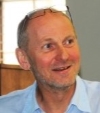As the summer conferences are taking place, providing – we hope – further physics guidance for us, it is also time to start thinking about the autumn linear collider programme. The highlight for the linear collider community is the yearly international Linear Collider Workshop which in 2014 will take place from 6 to 10 October in Belgrade, Serbia. It is being hosted by the Vinca Institute of Nuclear Sciences. The workshop webpage is available at lcws14.vinca.rs/welcome/. General information about Belgrade and the workshop was presented by Ivanka Bozovic-Jelisavcic, the chair of the Local Organising Committee, who introduced the LCWS14 planning during the last day of the Americas Linear Collider Workshop at Fermilab in May.
The workshop in Belgrade will start Monday morning and run until Friday around 13:00. The format will be familiar to the linear collider community, with plenary sessions Monday and Friday, and parallel sessions Tuesday to Thursday. The parallel session working groups will be defined by end July and 6 to 8 working groups can be expected both for the detector&physics and accelerator sectors. It is not too late to influence the programme for the workshop – ideas and comments are welcome.
This Linear Collider Workshop is the sixteenth in the series that started in 1991. This workshop is, in general terms, devoted to the study of the physics cases for future high-energy linear electron-positron colliders, taking into account the recent results from LHC, and to review the progress and future plans for the ILC and CLIC detector and accelerator projects.
Both ILC and CLIC have key challenges to address during the second half of 2014, and the workshop provides an excellent opportunity to discuss and hopefully conclude on some of these challenges. For ILC the ongoing process in Japan related to a site-specific implementation and providing the information needed to national committees and decision makers are high on the priority list. A restructured international ILC accelerator team has been established and this team is getting up to speed on these challenges. Another key issue is to establish a running/luminosity scenario addressed to Higgs and top physics – to mention the two most obvious areas – in the best possible way, taking advantage of how the machine can be upgraded in stages. Detector optimisation studies will a focusing point for both ILC and CLIC detector versions. The recently concluded P5 process will hopefully also provide improved support for continued effort on the US side, and by October more consequences of the P5 report will be known. For CLIC the physics studies will move from Higgs towards Beyond-the-Standard-Model topics in preparation for whatever the LHC at 13-14 TeV will unveil, and the accelerator collaboration will review the status and goals for the next phase and in particular the rapidly increasing interest for using X-band technologies in smaller accelerator projects which would be very benefitial for the technology.
On the social side there will be a welcome drink Sunday evening, reception Monday evening, a dinner Wednesday evening and a public lecture Thursday evening, in addition to ample opportunity to discuss with colleagues and friends outside the workshop events.
As usual there will be opportunities for smaller discussions for specific topics and steering groups. Additional satellite meetings will also take place in connection to the workshop, an example being the FCAL workshop on 12 and 13 October.
The registration for the workshop will open in the coming week and it is time for all of us to start planning our travels to Belgrade in October.



Recent Comments